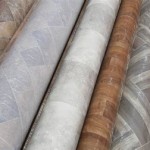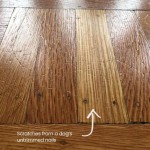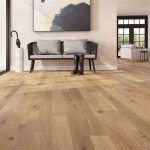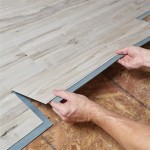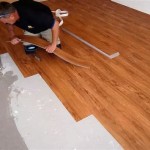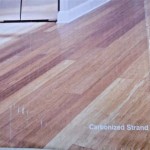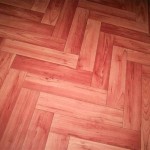What Moisture Content Should Wood Flooring Be?
The success of a wood flooring installation hinges significantly on understanding and maintaining the proper moisture content (MC) of the wood. Wood, being a hygroscopic material, readily absorbs and releases moisture from its surrounding environment. This natural characteristic can cause expansion and contraction, leading to a multitude of problems in a finished floor if not properly managed. These problems can range from unsightly gaps and cupping to more severe issues like buckling and adhesive failure. Therefore, knowing the appropriate moisture content for wood flooring, and how to achieve and maintain it, is crucial for a long-lasting and aesthetically pleasing result.
Moisture content is defined as the weight of water in wood expressed as a percentage of the weight of the oven-dry wood. This metric provides a standardized way to measure the amount of water within the wood cells, enabling comparison and informed decision-making. The desired moisture content for wood flooring isn't a fixed number; rather, it's a range determined by factors such as the species of wood, the geographic location, and the expected environmental conditions (relative humidity and temperature) within the building where the flooring will be installed.
Failing to account for the moisture content of wood flooring during any stage of the process, from manufacturing and acclimatization to installation and maintenance, can have serious consequences. This article will detail the ideal moisture content ranges, the factors affecting it, the methods for measuring it, and best practices for ensuring a stable and durable wood floor.
Understanding Equilibrium Moisture Content (EMC)
Central to the concept of moisture content in wood flooring is the Equilibrium Moisture Content (EMC). EMC represents the point where wood neither gains nor loses moisture because it is in balance with the surrounding environment. The EMC is primarily determined by the relative humidity and, to a lesser extent, the temperature of the air. As relative humidity rises, wood absorbs moisture until it reaches equilibrium with the air. Conversely, as relative humidity drops, wood releases moisture until it reaches a new equilibrium.
The EMC charts and calculators are readily available online, offering a quick reference for various temperature and humidity levels. Flooring installers and homeowners should familiarize themselves with these resources to understand the EMC in their specific geographic location and indoor environment. For instance, a home in a humid coastal area will have a higher EMC than a home in a dry desert climate.
The ideal moisture content for wood flooring at the time of installation should be as close as possible to the expected EMC of the environment in which it will be installed. This minimizes the potential for substantial moisture-related movement after installation. Achieving this requires careful acclimatization of the wood flooring prior to installation, allowing it to adjust to the prevailing conditions.
It is important to note that the EMC is not a static value. It fluctuates throughout the year as the seasons change and indoor heating and cooling systems operate. Therefore, maintaining stable indoor climate conditions is vital for the long-term stability of wood flooring.
Ideal Moisture Content Ranges for Wood Flooring
While the exact moisture content will vary depending on the specific circumstances, general guidelines exist for different types of wood flooring and regions. For most regions in the United States, a moisture content range of 6% to 9% is generally considered acceptable for wood flooring at the time of installation. In drier climates, this range may be lower, while in more humid climates, it may be slightly higher.
Solid hardwood flooring typically performs best within the recommended moisture content range. Engineered wood flooring, with its multi-layered construction, is generally more dimensionally stable than solid hardwood and can tolerate a slightly wider range of moisture content. However, it is still crucial to adhere to the manufacturer's recommendations for the specific product being installed.
Wide-plank flooring, popular for its aesthetic appeal, is particularly susceptible to moisture-related problems due to the larger surface area available for moisture exchange. Therefore, extra care must be taken to ensure proper acclimatization and to maintain a stable indoor environment. The moisture content of wide-plank flooring should be closely monitored, and the installation process may require additional precautions, such as using mechanical fasteners in addition to adhesive.
Bamboo flooring, although technically a grass, is often used as a substitute for hardwood flooring. Bamboo also absorbs and releases moisture, and its ideal moisture content range is generally similar to that of hardwood flooring, typically between 6% and 9%. The specific moisture content target should be confirmed with the bamboo flooring manufacturer's guidelines.
It is crucial to consult the manufacturer's specifications for the specific wood flooring product being used. The manufacturer will often provide a recommended moisture content range for installation, taking into account the species of wood, the construction of the flooring, and the intended application.
Measuring Moisture Content in Wood Flooring
Accurately measuring the moisture content of wood flooring is essential for ensuring a successful installation. Several types of moisture meters are available for this purpose, each with its own advantages and limitations.
Pin-type moisture meters, also known as resistance meters, measure the electrical resistance between two pins inserted into the wood. As the moisture content increases, the electrical resistance decreases. Pin-type meters are relatively inexpensive and easy to use, but they can leave small puncture marks in the wood. They are also sensitive to surface moisture and can be affected by the presence of conductive materials in the wood.
Pinless moisture meters, also known as non-invasive meters, use radio frequency or capacitance technology to measure the moisture content without penetrating the wood. These meters are less likely to damage the flooring and can provide a more representative reading of the overall moisture content. However, they may be more expensive than pin-type meters and can be affected by the density and species of the wood.
Regardless of the type of moisture meter used, it is important to follow the manufacturer's instructions carefully. The meter should be calibrated properly, and multiple readings should be taken across several boards to obtain an accurate assessment of the average moisture content. It is also advisable to measure the moisture content of both the wood flooring and the subfloor to ensure compatibility.
In addition to using a moisture meter, a simple "plastic sheet test" can be performed to assess the moisture vapor transmission rate of the subfloor. This involves taping a plastic sheet to the subfloor and observing whether condensation forms underneath it after a period of time. The presence of condensation indicates that the subfloor may be too damp for wood flooring installation.
Documenting all moisture content readings is crucial. These records can serve as a valuable reference in case of future problems, providing evidence that proper acclimatization procedures were followed.
Maintaining the proper moisture content in wood flooring is an ongoing process, not just a one-time measurement during installation. Regularly monitoring the indoor humidity levels and taking steps to control them will help to ensure the long-term stability and performance of the floor.
In conclusion, achieving the correct moisture content in wood flooring is critical for a successful and lasting installation. Understanding the concept of EMC, knowing the ideal moisture content ranges for different types of wood flooring, and using appropriate measuring tools are all essential steps in this process. By paying close attention to moisture content, installers and homeowners can minimize the risk of moisture-related problems and enjoy their beautiful wood floors for many years to come.

Parquet Flooring Moisture Testing Mm Carpentry Ltd

What Is The Ideal Moisture Content For Wood Flooring Chaunceys Timber

The Correct Use Of Moisture Meters With Timber Floors

Why Flooring Installers Need To Measure Moisture Content In Wood Subflooring Hardwood Floors

How To Measure Moisture In Hardwood Floors

Acceptable Moisture Content In Concrete For Wood Flooring The Group

Acclimation Hardwood Floors

Recording Moisture Levels Before Fitting Wood Flooring And Beyond Blog

Acceptable Moisture Levels In Wood A Comprehensive Guide

Proportion Of Moisture Content Measurements In Wood Floor Members Table
Related Posts

